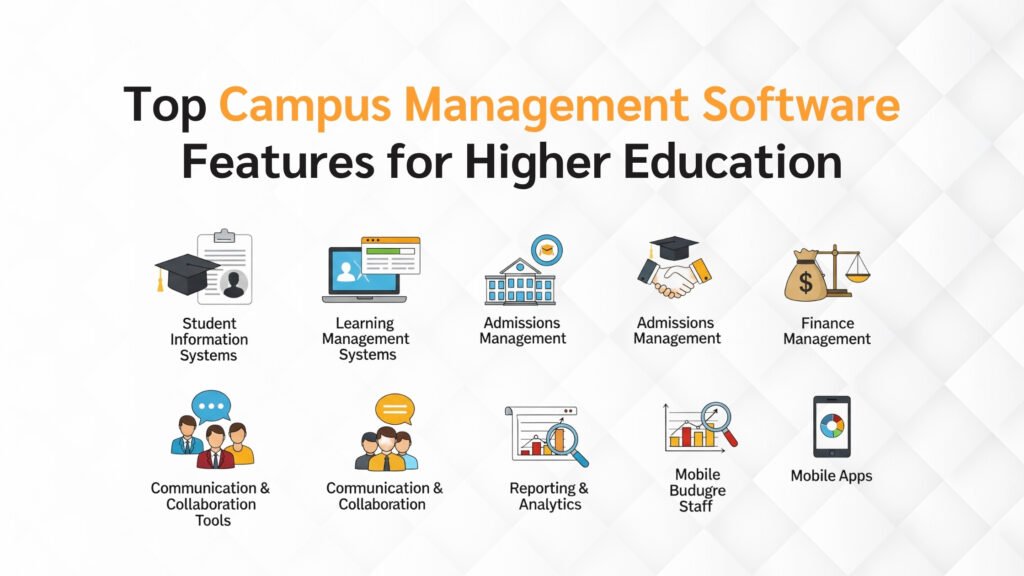5 Costly Mistakes When Choosing Campus Management System Software
Choosing software to manage a school or university’s operations is a critical decision that can either simplify administration or add years of frustration. The right platform can support everything from student enrollment to course scheduling, helping institutions deliver a smooth experience to students, faculty, and staff.
However, too often, schools make the wrong choice due to poor planning, lack of clarity, or pressure to make quick decisions. A bad system is not just inconvenient—it drains time, increases costs, and disrupts workflows. For this reason, evaluating campus management system software requires more than just checking a feature list.
1. Prioritizing Price Over Long-Term Value
Price is always a factor, but when it becomes the deciding factor, institutions risk choosing systems that fall short on critical capabilities. Low-cost solutions may appear budget-friendly at first, but they often come with trade-offs that affect long-term performance.
Hidden costs can include limited user seats, additional fees for updates, or a lack of essential modules such as attendance tracking or financial reporting. Institutions that go for the cheapest option may also face challenges when trying to scale their system or support more complex academic structures.
Over time, these limitations often result in the need to purchase add-ons or even switch systems—costing more than an upfront investment in a robust, future-ready platform.
2. Ignoring Integration Capabilities
A campus doesn’t operate in isolation. Most institutions use multiple software systems—financial tools, learning platforms, HR solutions, and communication apps. Choosing a management platform that doesn’t connect well with these tools creates data silos, operational inefficiencies, and potential errors.
For example, if your admissions system can’t sync with your finance module, students might be incorrectly billed or receive outdated scholarship data. If your HR system can’t communicate with the scheduling tool, it becomes harder to align faculty availability with course assignments.
Look for platforms that offer open APIs, built-in integrations, or proven success in working with third-party tools. Integration isn’t just a bonus—it’s a necessity for modern campus operations.
3. Overlooking User Experience and Interface Design
The platform may be technically strong, but if users struggle to operate it, the whole system fails. Faculty members, administrative staff, and students all interact with the software in different ways. If it’s clunky, confusing, or non-intuitive, daily tasks become time-consuming and frustrating.
A user-friendly interface reduces the need for extensive training and ensures that even new staff can complete their tasks with minimal onboarding. Poor usability, on the other hand, leads to frequent errors, increased support requests, and delayed processes.
Features like clear navigation, role-based dashboards, and responsive design for mobile access should be standard, not optional. Conducting usability tests before full implementation can reveal whether the system truly meets day-to-day needs.
4. Not Evaluating Vendor Support and Customization Options
Even the most powerful software will encounter technical issues, require updates, or need adjustments to better fit institutional workflows. If your vendor doesn’t offer reliable support or allow customization, you may be left with a system that doesn’t evolve as your institution grows.
Many platforms come with rigid workflows that don’t adapt to regional academic calendars, different grading systems, or custom reporting formats. In such cases, institutions end up maintaining parallel manual processes—defeating the purpose of automation.
Vendor support matters long after the sale. Schools should verify service-level agreements (SLAs), support availability during critical times (like admissions and exams), and turnaround times for issue resolution. A responsive, knowledgeable vendor can save your institution countless hours and headaches.
5. Failing to Involve Key Stakeholders in the Decision
Administrative decisions are often made by a small group of leaders or IT professionals without involving the people who will actually use the system every day. This lack of input results in software that may work technically but doesn’t meet real-world needs.
Stakeholders across departments—such as admissions, finance, academics, and IT—should all have a voice in the selection process. Each team has unique workflows and requirements that should be reflected in the final choice.
Engaging staff early also improves adoption rates, as they are more likely to support a system they helped evaluate. Consider using pilot programs, feedback sessions, or surveys during the software selection phase to ensure broad-based alignment.
Conclusion
Rushing into a decision or focusing only on surface-level features can cause more harm than good when selecting campus management system software. Institutions that take the time to evaluate total value, integration capabilities, usability, vendor support, and stakeholder input are far more likely to adopt a solution that meets their long-term needs. With the right system in place, schools can streamline operations, improve service delivery, and support every phase of the student journey with confidence.







